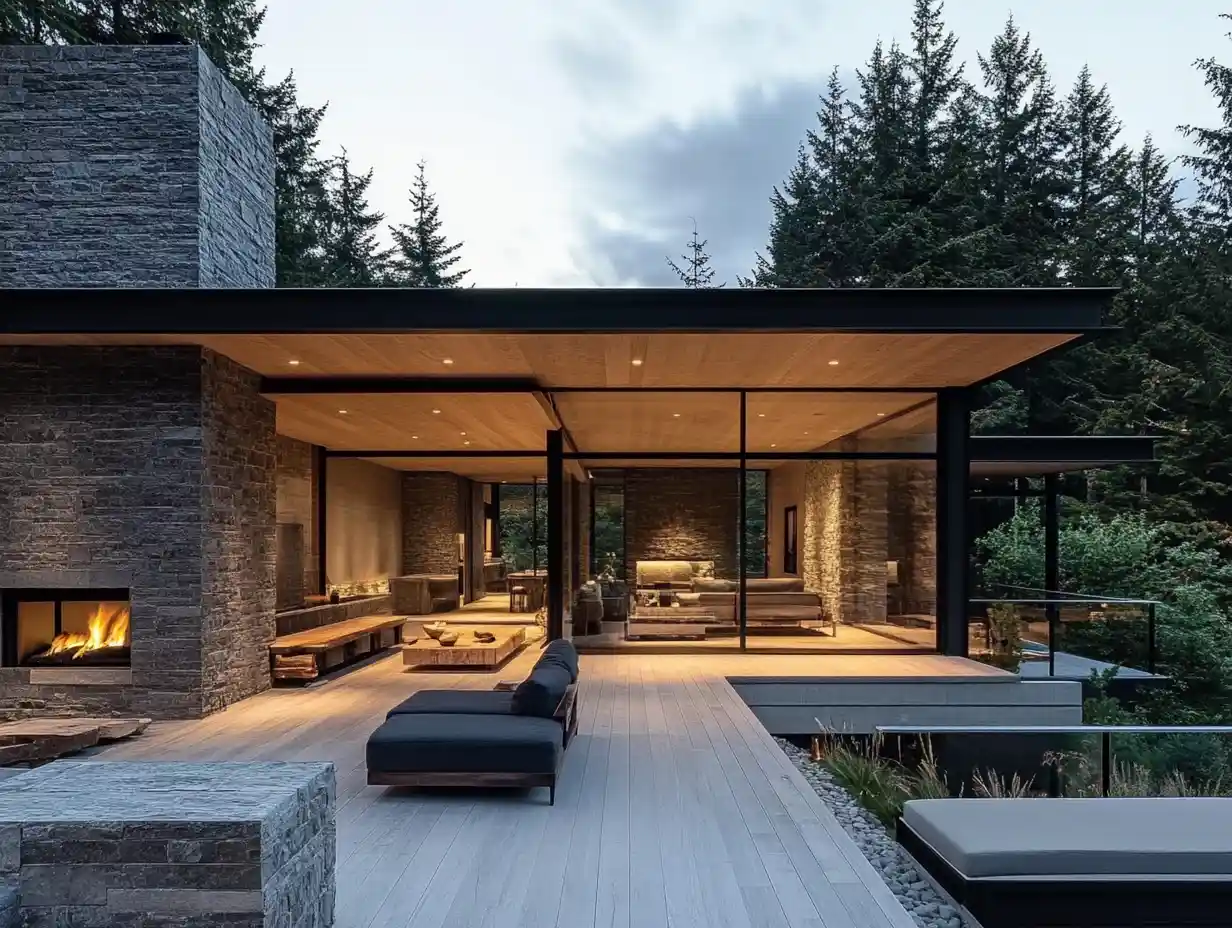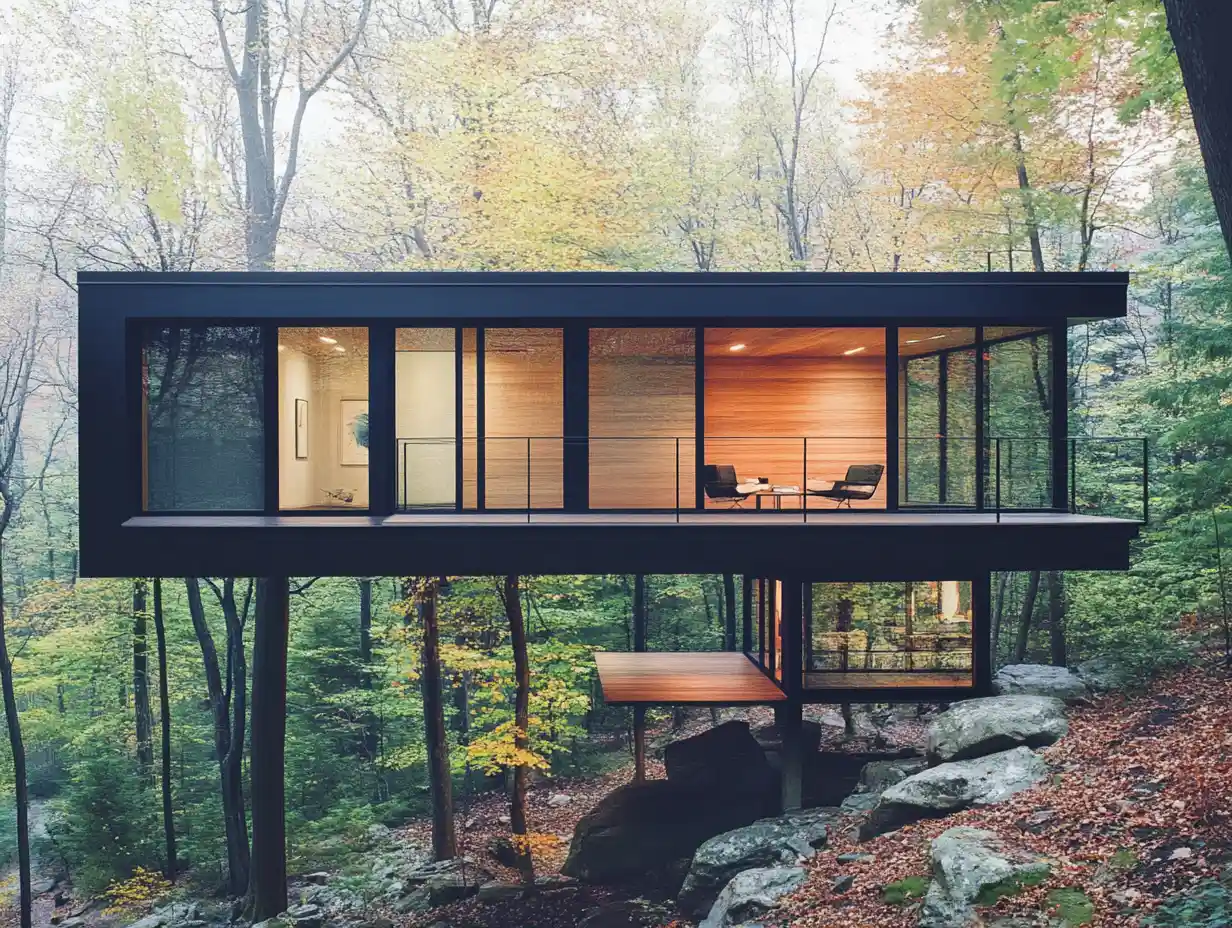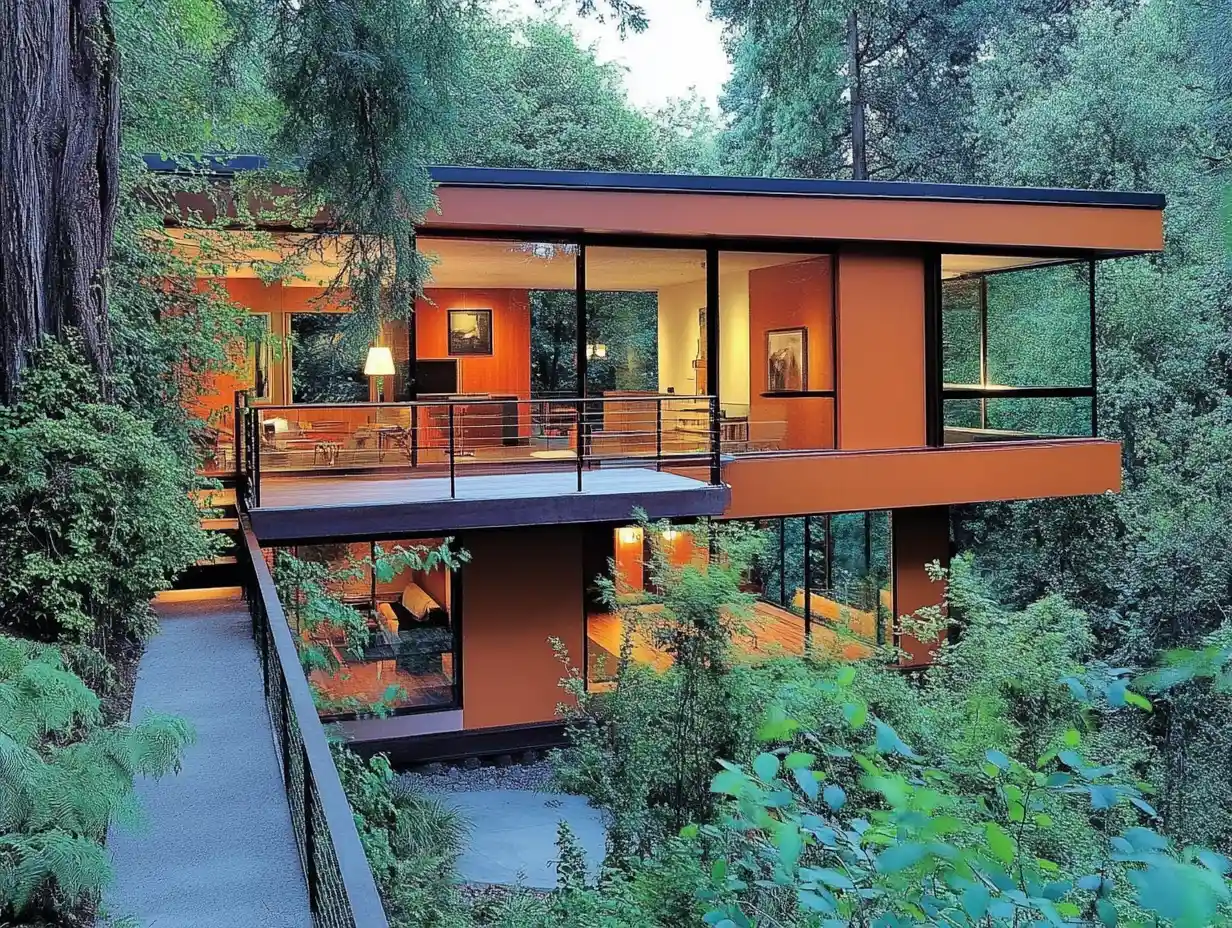Imagine waking up to the gentle rustle of leaves and the crisp scent of pine wafting through your window. Forest house architecture offers us the unique opportunity to blend modern design with the serene beauty of nature. As we explore this fascinating world, we discover how these structures not only complement their natural surroundings but also provide a peaceful retreat from the hustle and bustle of urban life.
Incorporating elements like large windows, natural materials, and open floor plans, forest houses invite the outdoors in, creating a seamless connection between home and habitat. Whether it’s a cozy cabin nestled in the woods or a contemporary glass house perched on a hillside, each design offers its own charm and challenges. Join us as we delve into the essentials of forest house architecture, offering inspiration and practical tips for creating your own woodland sanctuary.

The Allure Of Forest House Architecture
Forest house architecture captivates our senses by seamlessly integrating structures into their natural surroundings. By prioritizing harmony with the landscape, these homes provide a unique living experience.
Large windows are a hallmark of this design style, offering panoramic views and ample natural light. They blur the boundaries between interior and exterior, inviting nature indoors.
Natural materials, such as wood and stone, reinforce the connection to the environment. These elements not only enhance aesthetic appeal but also improve sustainability and energy efficiency.
Architectural designs vary from rustic cabins to sophisticated glass houses. Each fulfills our desire to escape the hustle and bustle, providing peaceful retreats.
Emphasizing tranquility and comfort, these homes serve as sanctuaries where we can connect with nature and find inner peace.

Key Design Elements Of Forest Houses
Forest houses captivate us with their harmonious design, integrating both aesthetic elements and ecological considerations. These homes balance the allure of natural beauty with cutting-edge architectural practices.
Integration With Nature
Integration with nature defines forest house architecture. We see this through expansive windows and open floor plans that invite the outdoors inside. Designs often incorporate decks or terraces, providing a direct connection to the surrounding landscape. Landscaping uses native plants and respects natural features, ensuring the house blends seamlessly with its environment.
Sustainable Materials
Sustainable materials form the backbone of forest house construction. Wood from responsibly managed forests and local stone help minimize environmental impact. Recycled materials can add unique character while adhering to eco-friendly practices. Using thermal insulation and high-efficiency glazing enhances energy conservation, providing comfort and reducing reliance on artificial climate controls.
Inspirational Forest House Designs
The allure of forest house designs lies in their ability to harmonize with nature while offering a serene, modern living environment. Let’s explore some inspiring examples of these designs.
Modern Forest Retreats
Modern forest retreats embrace minimalist aesthetics with clean lines and expansive glass features. We’re seeing the use of floor-to-ceiling windows, maximizing views and natural light. For instance, some homes incorporate sliding glass doors that blur the indoor-outdoor divide. Interior spaces usually feature open floor plans, enhancing the sense of space and airiness. Materials like concrete and steel add contemporary flair, often softened by natural wood finishes. These retreats frequently have energy-efficient technology, such as geothermal heating or solar panels, to maintain eco-friendliness without sacrificing modern comforts.
Rustic Log Cabins
Rustic log cabins offer a timeless charm that resonates with the traditional idea of living in the woods. They’re typically constructed using logs sourced from the surroundings, ensuring a cohesive look with the environment. Our favorite designs include cozy interiors with roaring fireplaces and wooden accents. Large, wrap-around porches extend living spaces into the outdoors, fostering direct interaction with nature. Many cabins incorporate reclaimed wood and stones, celebrating sustainability while preserving rustic aesthetics. Modern elements like updated kitchens and bathrooms complement the classic log structure, creating a balance between comfort and tradition.

Tips For Designing Your Own Forest House
Designing a forest house offers the chance to blend architecture with nature’s beauty. It’s essential to consider various design aspects to ensure harmony and functionality.
Choosing The Right Location
Selecting the ideal site is crucial for a forest house. We assess the topography, sunlight, and wind patterns as they influence design decisions. Proximity to water bodies or natural features can enhance the connection to nature. Legal considerations like zoning regulations and environmental restrictions should inform location choices. By understanding these factors, we ensure the home integrates smoothly with its surroundings.
Balancing Aesthetics And Functionality
Achieving a balance between beauty and purpose enhances the living experience. We incorporate large windows for views and natural light but also prioritize energy efficiency. Open floor plans create inviting spaces yet should maintain privacy and effective insulation. Material choices combine aesthetics and practicality, using sustainable options that withstand forest environments. Through thoughtful design, we create a home that looks and feels harmonious with nature.

Challenges And Considerations
Designing and constructing a forest house presents unique challenges. Remote locations often mean limited access to utilities, which can increase costs and complexity. In these cases, planning for off-grid systems, like solar panels or rainwater collection, becomes crucial.
Environmental impact needs careful consideration. Building in natural areas can disrupt ecosystems, so it’s essential to choose a site with minimal ecological disturbance. Using eco-friendly materials and construction techniques helps mitigate this impact.
Weather conditions in forested areas vary greatly, affecting design requirements. High humidity or heavy snow loads may necessitate specific building adaptations, such as elevated structures or reinforced roofs. These considerations ensure safety and durability.
Permitting and regulations can also pose challenges. Zoning laws and environmental restrictions often affect what can be built and where. Engaging with local authorities early in the planning process helps navigate these regulations smoothly.
By addressing these challenges thoughtfully, we can create forest houses that merge seamlessly with nature while also being responsibly and sustainably constructed.
Conclusion
Forest house architecture offers a harmonious blend of modern design and natural beauty, creating homes that truly connect with their surroundings. By emphasizing the use of natural materials like wood and stone, and incorporating large windows for panoramic views, we can achieve a living experience that blurs the lines between inside and outside. Thoughtfully designed features such as open floor plans and decks enhance this connection, allowing for comfortable and sustainable living. Through careful site selection and eco-friendly design practices, these homes provide a tranquil retreat that aligns with both environmental principles and modern living standards.















Leave a comment